With each passing week, Bayer Leverkusen can taste the treble.
Having dispatched Bayern Munich in the Bundesliga to achieve a five-point lead, the German side is also in the semi-finals of the DFB-Pokal and won all six matches in their Europa League group.
Xabi Alonso’s men are flying high and poised to end 11 years of Bayern Munich dominance in Germany.
While the Die Schwarzroten has one of the best defensive records in Europe’s top leagues, the team also features an exhilarating, free-flowing attack.
They’re one of the most enjoyable clubs to watch in the current campaign and poised for a historic season.
This Bayer Leverkusen tactical analysis will look at the philosophy in play at Bayer Leverkusen.
Our scout report will examine the tactics of Xabi Alonso’s side, working our way down to the core principles of their fluid attack.
Xabi Alonso Tactics – Ball Near Overloads
The first principle on our list is ball-near overloads.
Xabi Alonso’s team displays an exceptional level of tactical understanding in their collective actions.
Regardless of the phase of attack or where they are on the pitch, they have an understanding of how to use their numbers to manipulate the opposition’s shape.
Once the opponent becomes unbalanced near the ball, Bayer Leverkusen show an exceptional ability to position themselves inside and outside of the press to eventually spring a player forward.
On top of the concept of creating overloads, what’s most impressive about this side is that there’s not one distinct pattern.
They’re equally comfortable creating space between the pivots and attacking midfielders to target opponents between the lines or to play with minimal width, a concept we’ll talk about later, and draw opponents into too narrow a defensive shape.
During the build-out or in the middle third, Die Werkself may use two vertically compact lines to retain possession and draw the opponent up the pitch.
Once the forward, most lines are pulled too high up the y-axis, typically becoming disconnected from defensive midfielders, which is the signal to play forward.
As our first image shows, passes into the pivots generally do the job, drawing the attacking midfielders up the pitch and creating space between the lines.
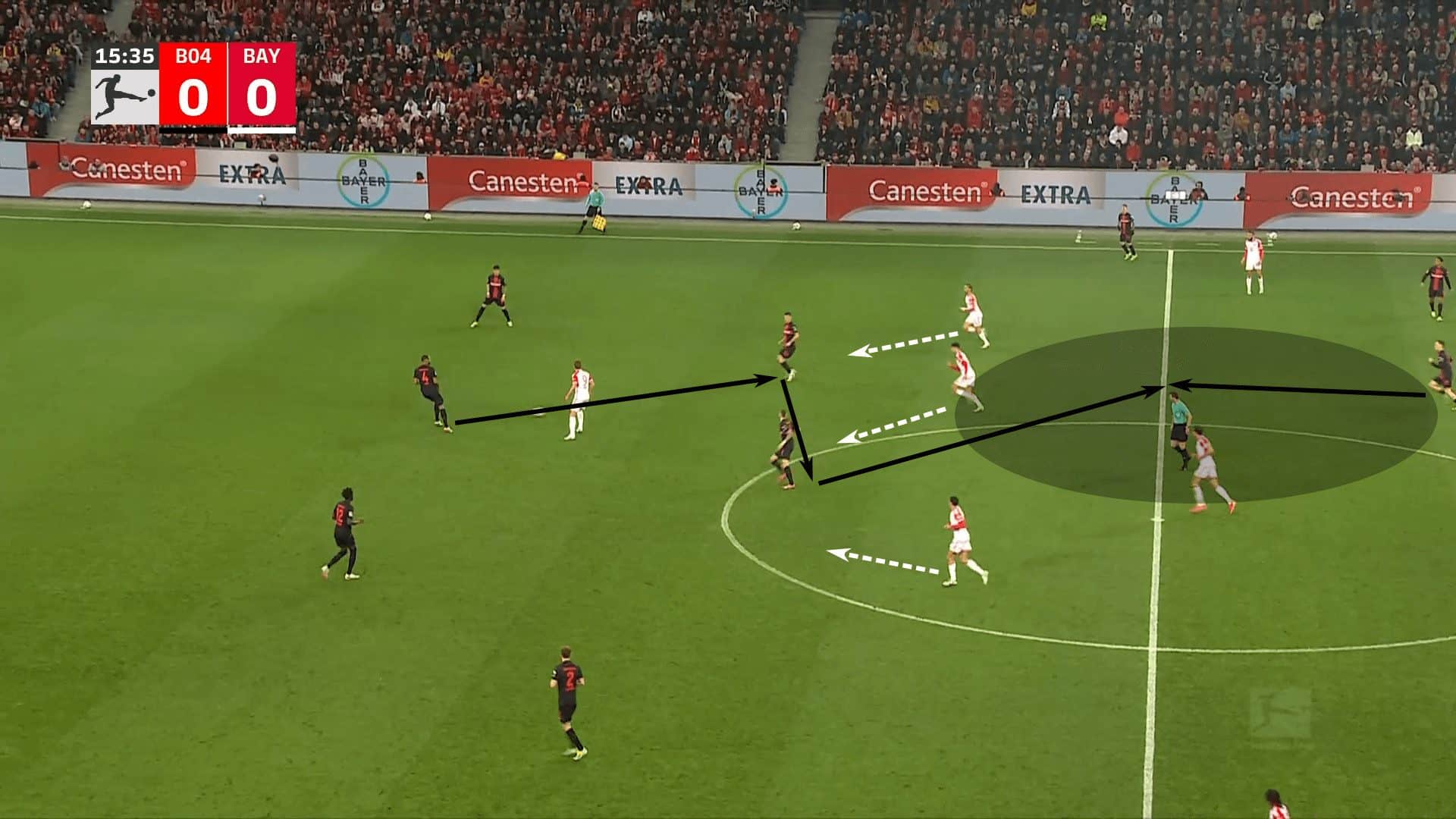
Once a player in that second line of the press steps forward to pressure the ball, it cues one of the Bayer Leverkusen attackers to move into the space the pressing player has vacated.
As the first defender steps forward, he leaves an enlarged pocket of space for the opponent to move into.
That’s exactly what we see here and how the Bundesliga leaders played out of the Bayern Munich press.
Once they play out of the press, the receiving attacker has the freedom to turn upfield and dribble if there is space.
But that’s not what happened in this specific sequence.
Rather than turning upfield, the receiving attacker set the ball into one of his backline teammates, who drove forward with the ball.
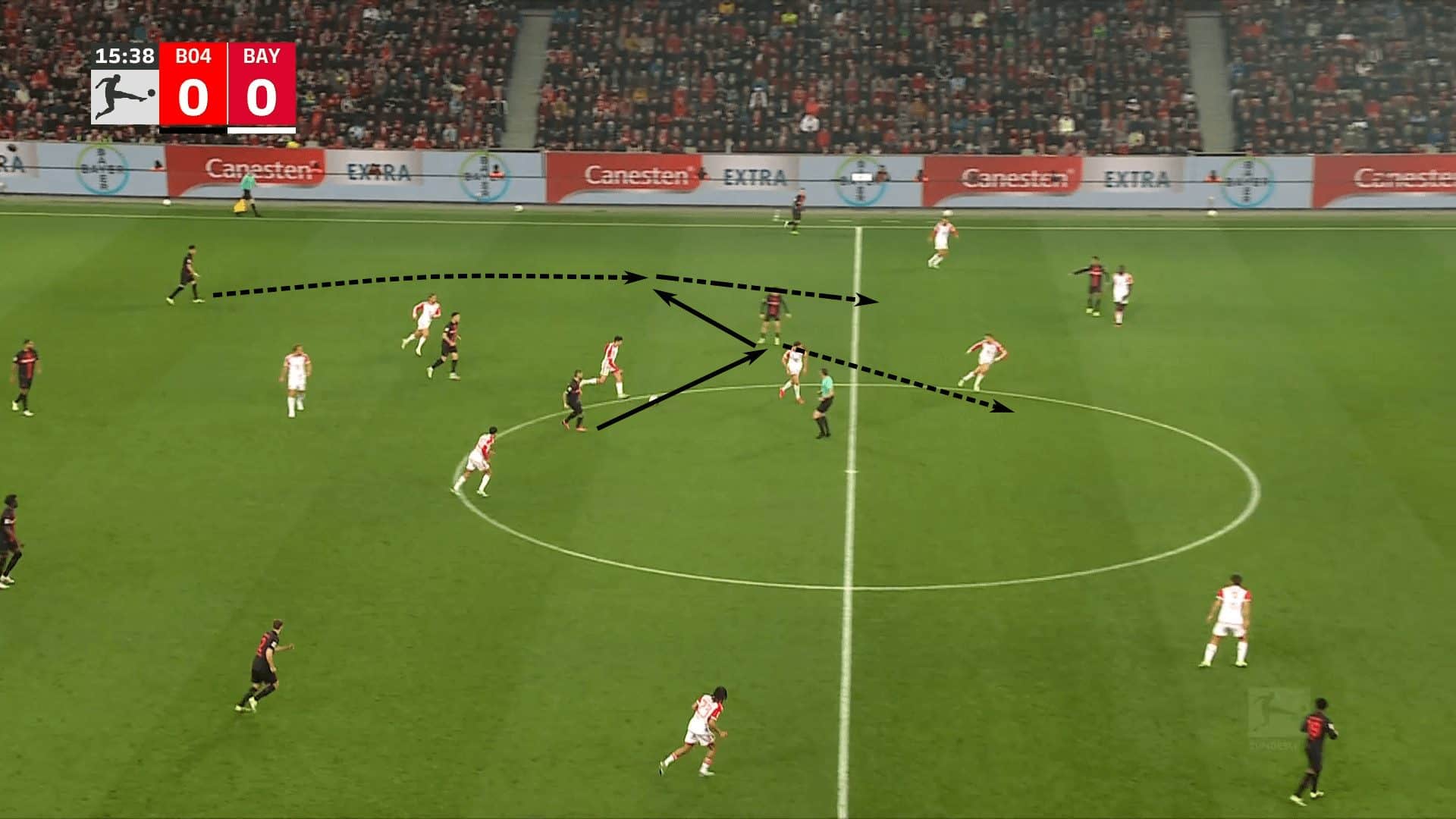
This side’s confidence in possession is a joy to behold.
There are hints of Pep Guardiola’s sides — not only the Bayern Munich team that Xabi Alonso played on, but also the degree of confidence seen in Manchester City and Barcelona during Pep’s tenures with the clubs.
The confidence is seen in the next image.
Look at the sheer amount of numbers they pull into that small, shaded space.
They’re playing 7v8, which means the Bavarians have left a lot of space unprotected.
A pass forward into a 2v2 breaks the initial wave of the press, leading to a switch of play to Leverkusen’s left side.
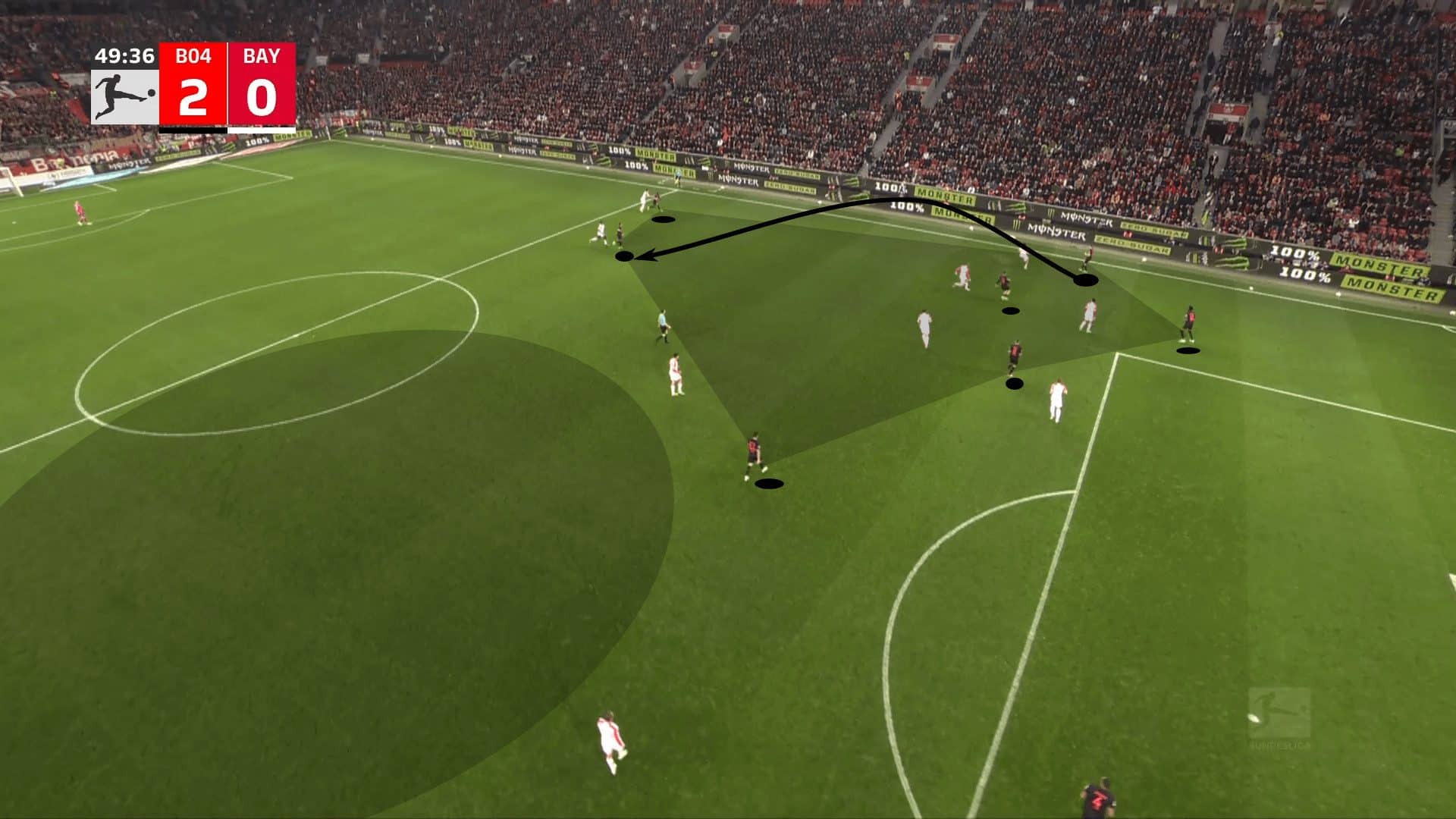
That switch creates a 3v3 on the left.
With numeric equality, Bayer Leverkusen initially take deeper positions to draw their opponents forward.
The Munich defenders take the bait.
Álex Grimaldo initiates the give-and-go with Nathan Tella, whose deep starting position draws Kim Min-jae forward.
Grimaldo’s run is untracked, getting him behind the back line and 1v1 with Manuel Neuer.
The outside back smashed the ball into the net at the near post, extending the home side’s lead.
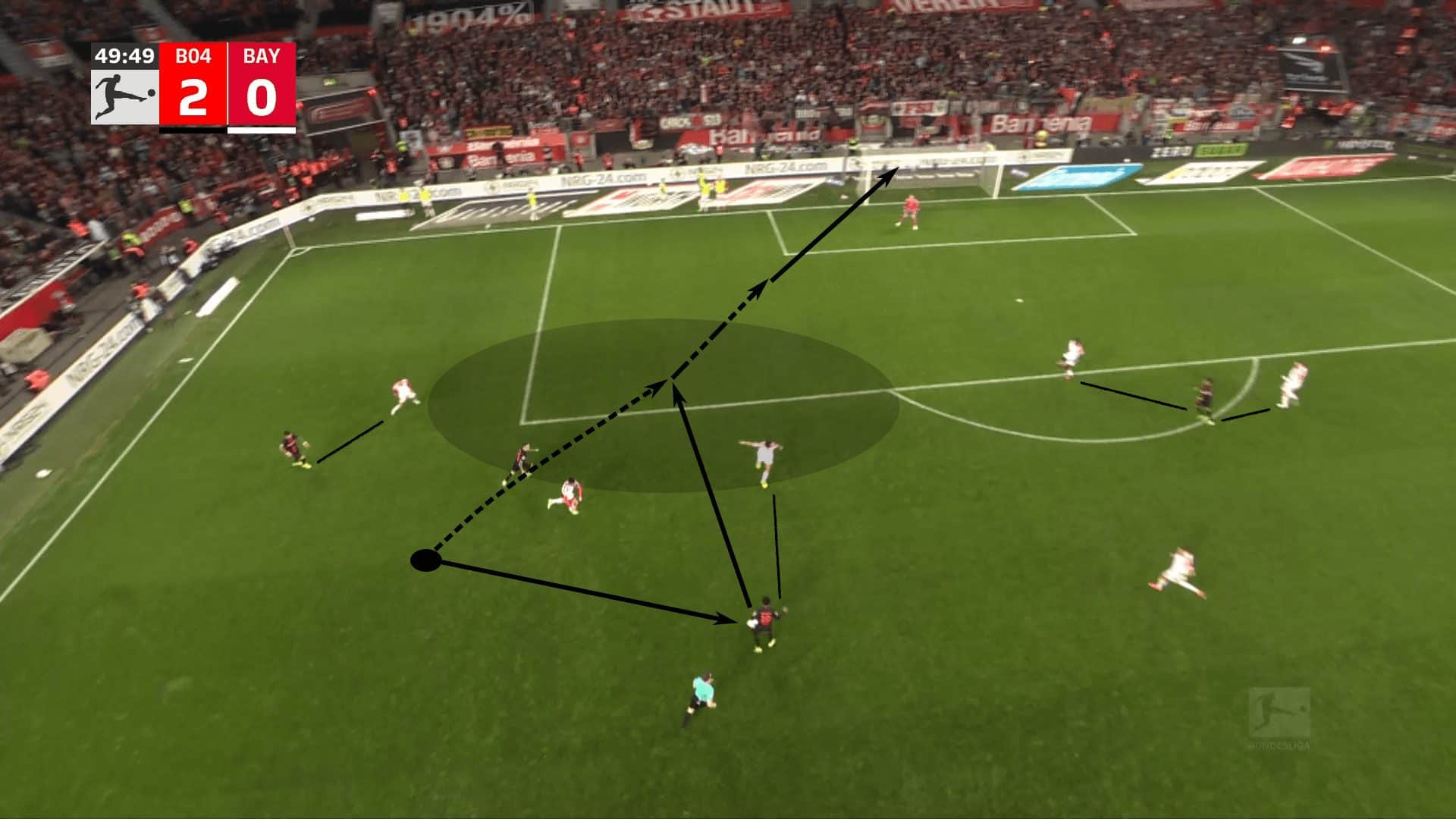
Bayer Leverkusen’s confidence in possession allows them to take on more risk than most teams.
The best-case scenario is that the overload causes an imbalance in the opposition’s press, leading to an artificial transition elsewhere.
Even in the worst-case scenario, where the ball is lost, they typically have numbers in close enough proximity to the ball that they can quickly counterpress and win it back.
At the very least, they can prevent the opponent from playing forward, allowing Xabi Alonso’s side to reorganise before re-engaging.
Bayer Leverkusen Tactics – Changing Tempo & Body Orientation
One of the more appealing elements of Bayer Leverkusen’s free-flowing attacking football is the tempo of play.
Few teams offer a better blend of low-tempo advancement with high ball circulation into more direct, high-tempo progressions up the pitch.
Bayer Leverkusen’s possession is well-designed to create better attacking conditions higher up the pitch or on the other side of the field.
But it all starts with the ball-near overloads that beat the opponents into unbalanced defensive shapes.
This is where we see the effectiveness of high-tempo ball circulation with the intention of indirect attacking.
The intent is not to progress the ball.
Rather, the idea is to create the space they want to attack.
Until that space is prepared, Bayer Leverkusen shows the patience and understanding that there is work to be done before advancing the ball.
This example against Borussia Mönchengladbach sets the scene well.
Look at the numbers Leverkusen commits centrally.
They have one player in each of the wings in a high and wide position and the left-centreback, offset slightly to the wings.
Otherwise, the remaining seven field players are all tightly connected centrally.
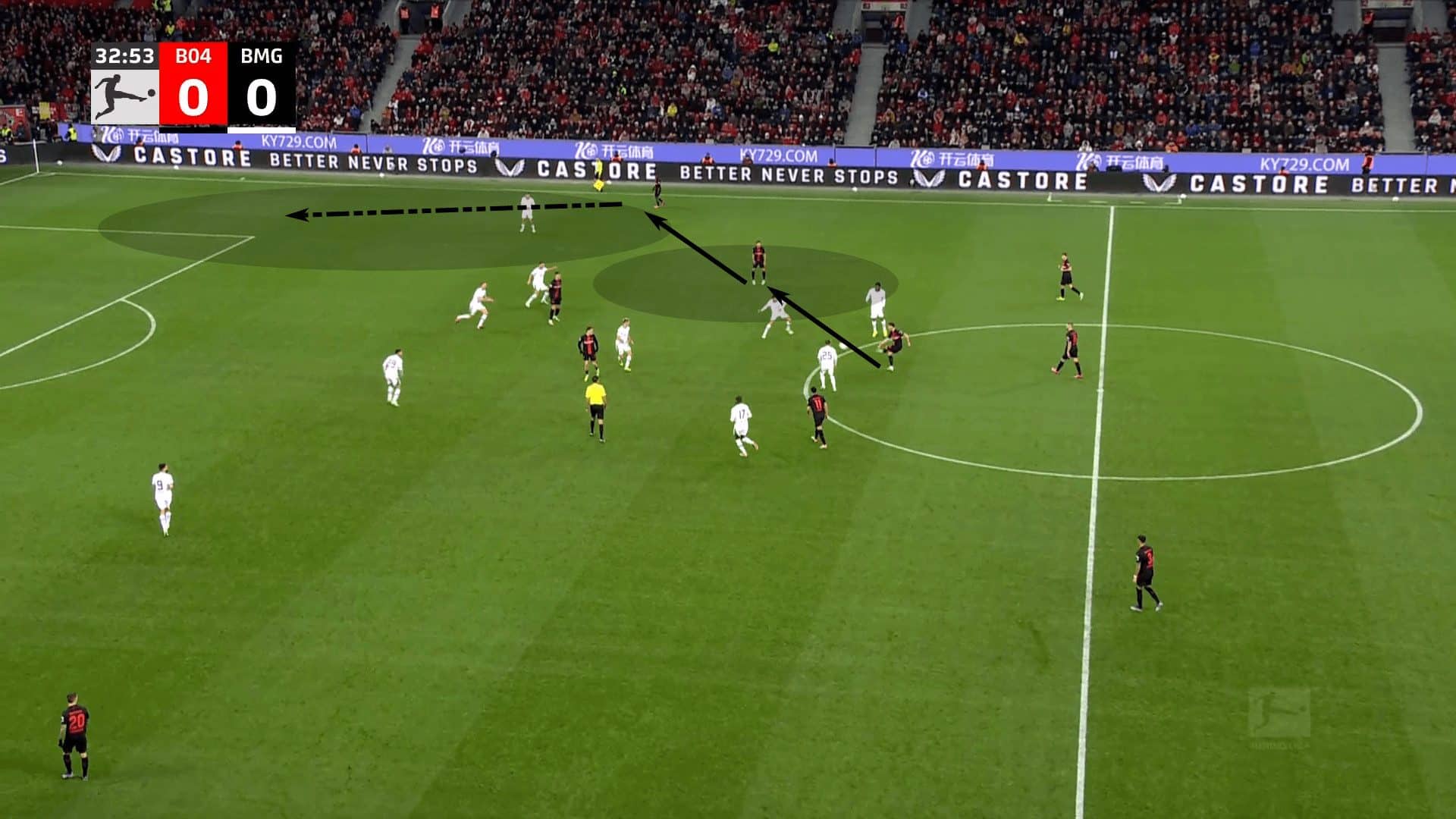
Borussia Mönchengladbach set up in a mid-block and was very patient when defending.
They generally had decent pressure on the pivots, preventing them from turning and playing forward.
This is the key with Bayer Leverkusen.
The moment they can spring someone into a forward-facing position, the team is prepared to change the tempo of the attack and get numbers forward.
In this instance, a forward pass went into the right half-space and then the right wing for a 1v1 duel.
Once that 1v1 duel is in place, Leverkusen does well to get numbers into the box, but they also position players at the top of the 18 to offer a negative pass for the first attacker.
If the pass goes negative, it’s common to see combination play that gets them into the box and into shooting situations.
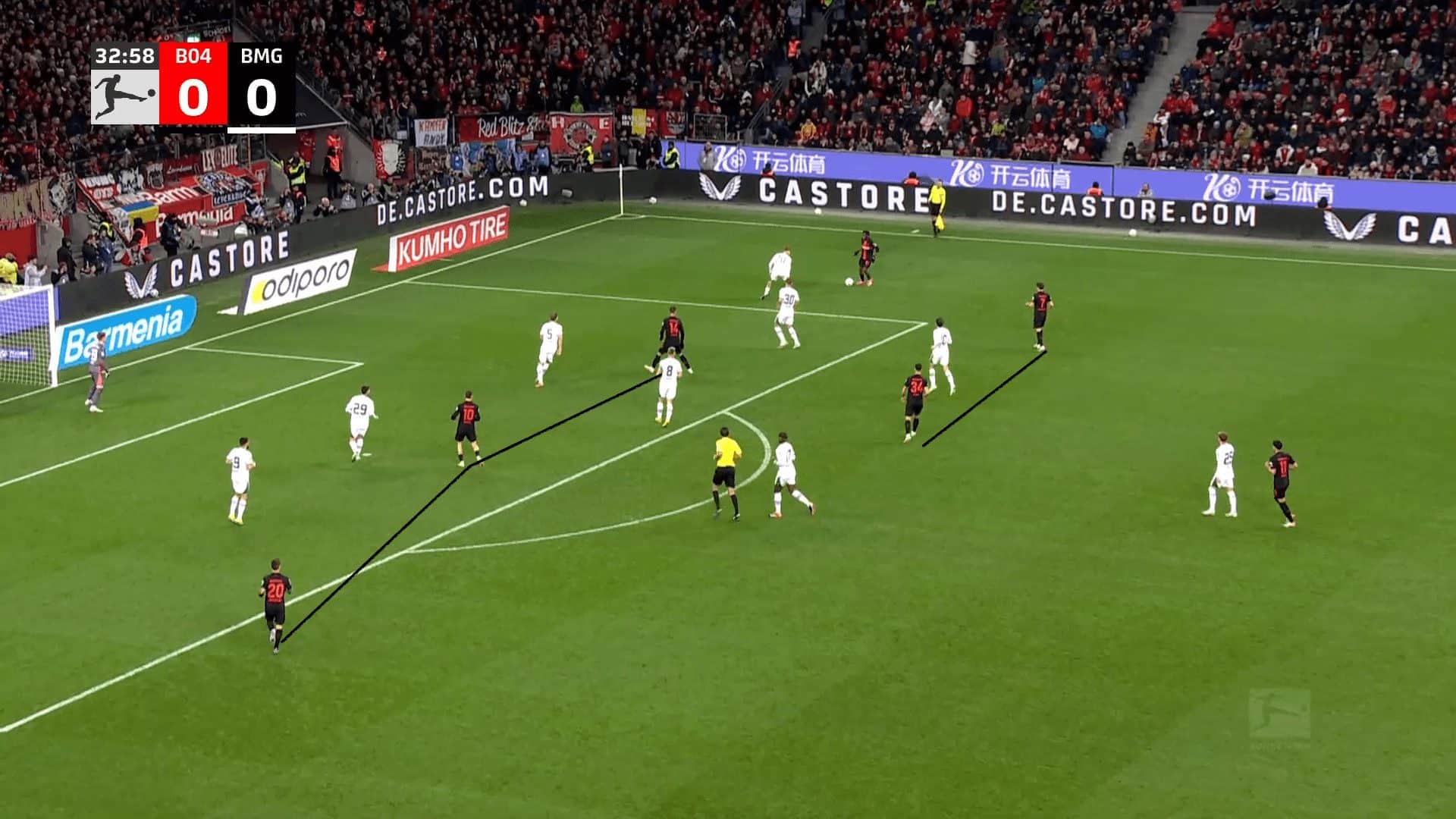
The team’s body orientation is another important detail.
When the Bayer Leverkusen backline has possession of the ball, it’s prevalent for the remaining field players to position their bodies to face the ball.
Much like Roberto De Zerbi’s Brighton, an up-back-forward pattern is on display.
In this case, it’s the centreback playing forward to a pivot who sets the ball to the right centreback, Josip Stanišić, who drives forward into the open space.
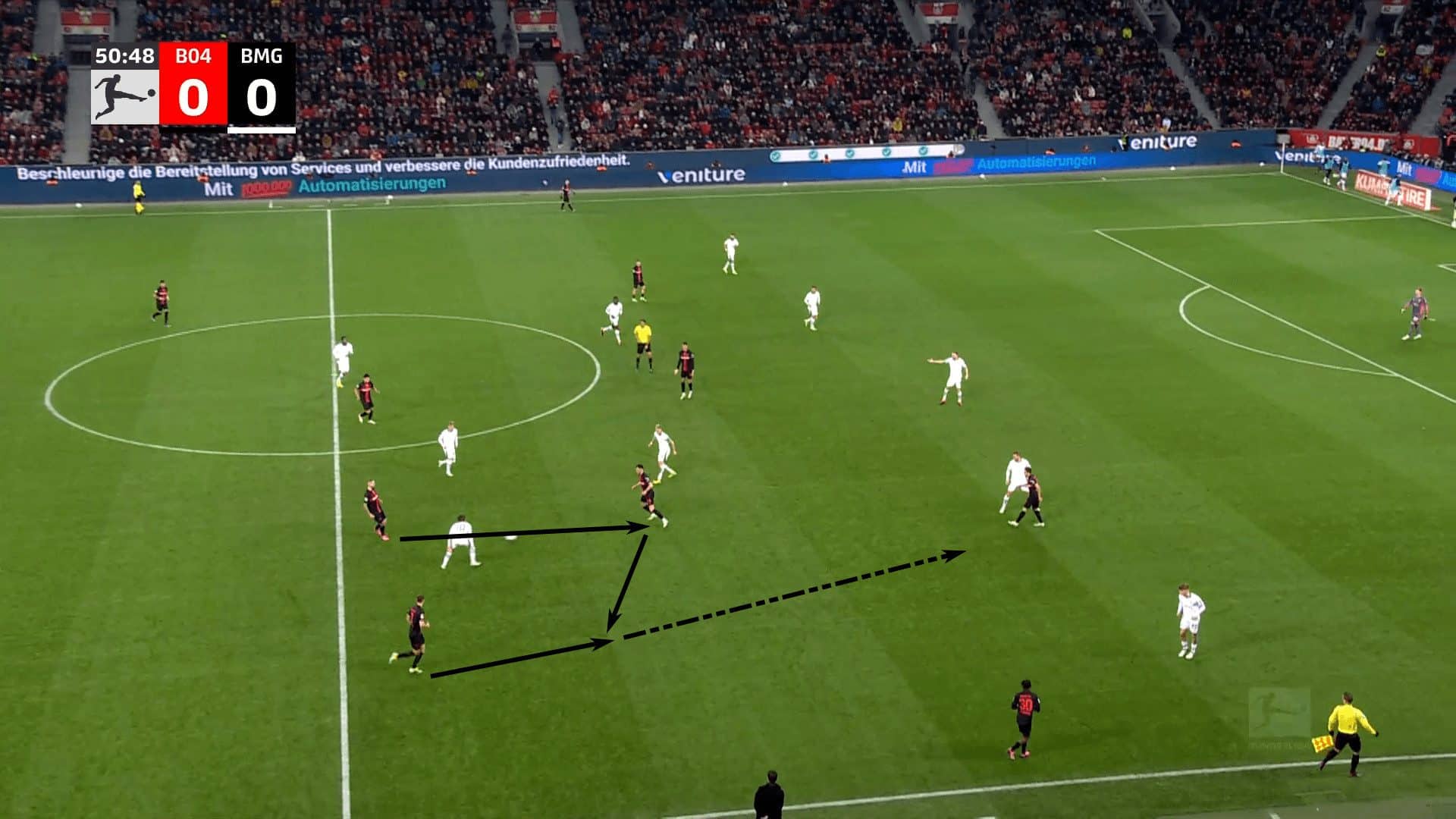
This next sequence gives a better sense of how body orientation connects to the phase of play.
The players are fully aware of the space.
They are occupying, scanning their shoulders and updating pictures of the field in their minds, but their body orientation is designed to allow for a quick, negative pass.
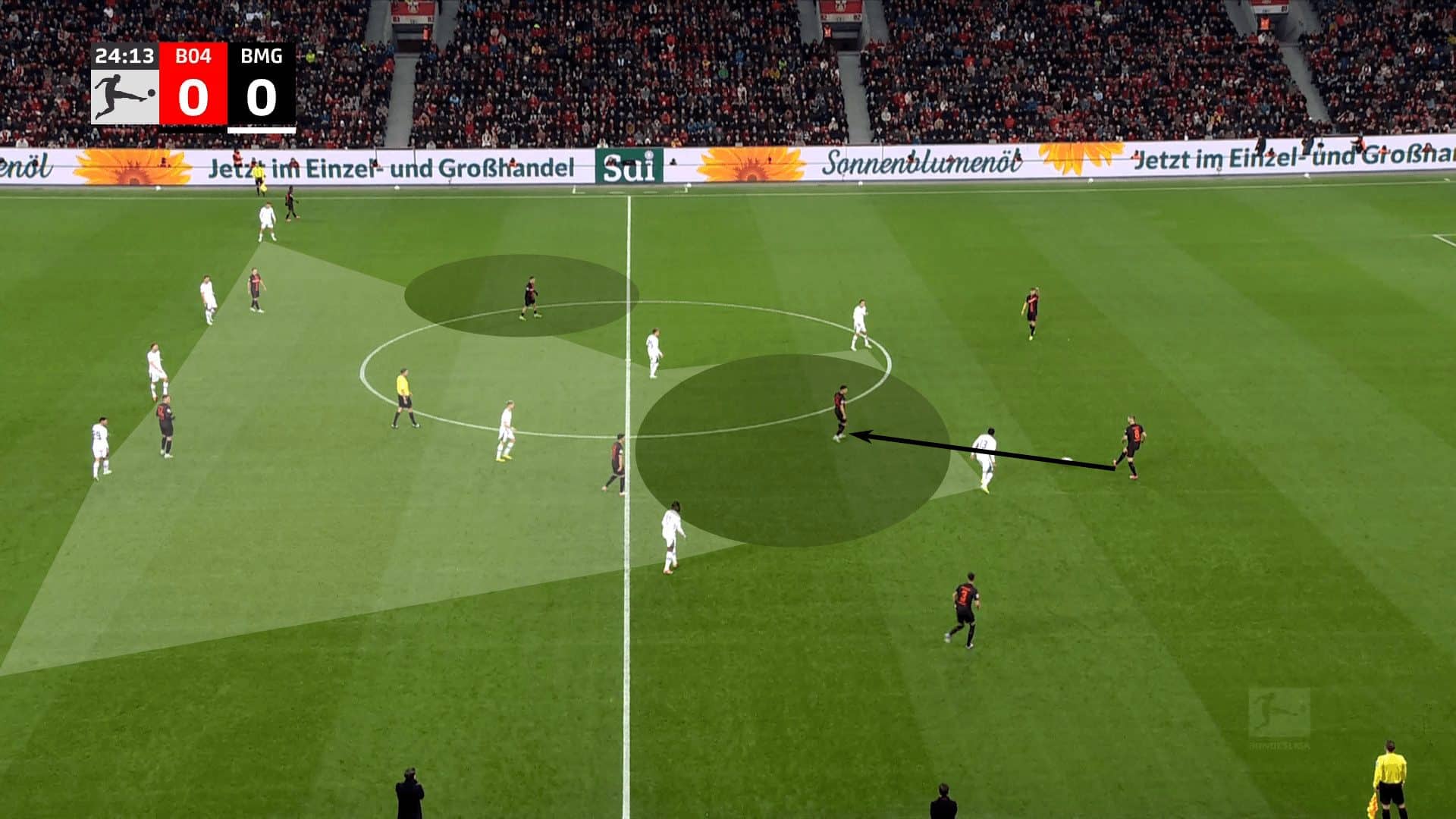
If they receive pressure that isn’t immediately applied where they find themselves with enough space to turn up field, they will.
Once that turn occurs, the supporting midfield players at diagonal angles take side-on body orientations with the expectation that they can receive on the front foot and increase the tempo of the attack by dribbling forward.
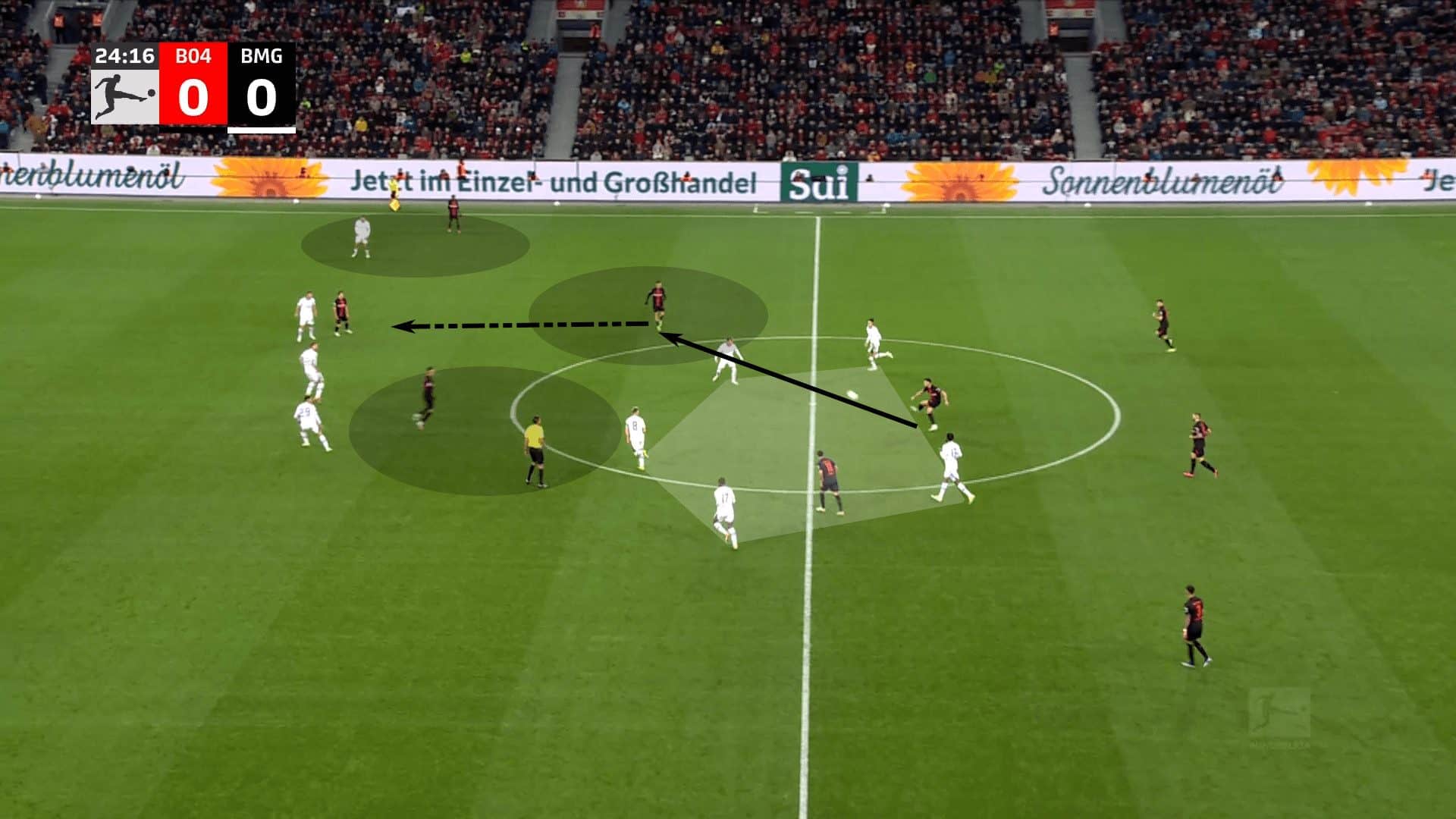
In this case, the ball goes into the player outside of the press, who drives forward before releasing the ball into the wing.
Once that 1v1 attack is set up and the Mönchengladbach backline takes away any opportunities to progress centrally, it’s the 1v1 duel that’s targeted as the side prepares to enter the box.
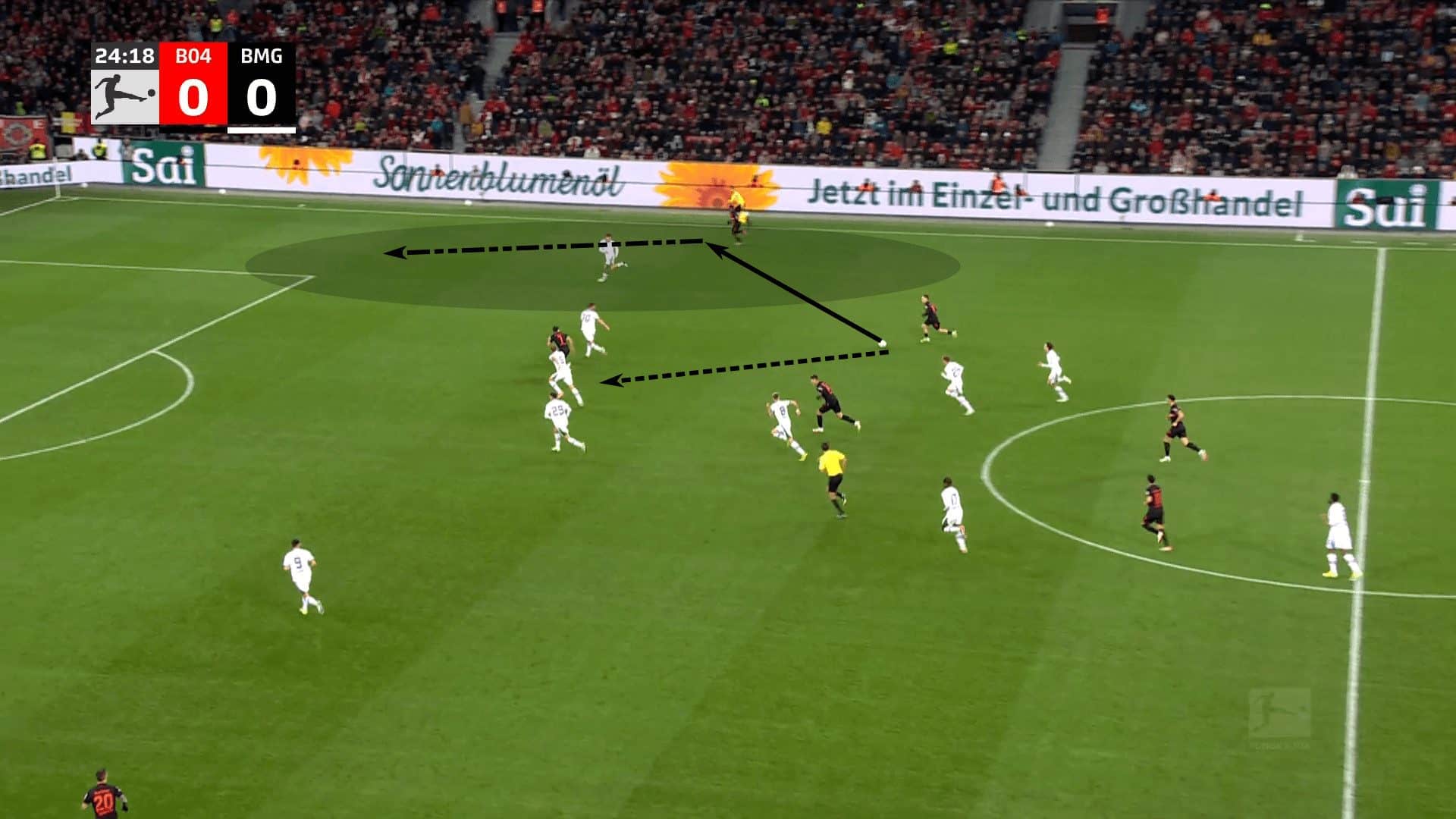
Overloads and changes in tempo are very highly connected.
With numbers near the ball, Bayer Leverkusen will use short passes to retain possession, draw the opposition towards the ball and create the space they want to attack.
Body orientation helps them play secure passes backwards and baits the opponent to increase the intensity of their pressure on the ball.
Should the opponent attempt a blind turn, defenders are trained to punish him, winning the ball and running to the next line to initiate the counterattack.
Xabi Alonso’s side has turned a common principle of pressure into an attacking advantage.
Minimal width
Finally, we have minimal width.
One important note here is that this side typically has one width provider in each wing.
The wingers will often take up high and wide positions to occupy the widest defenders on the opposition’s backline.
That’s designed to stretch the opponent vertically, creating more space for central penetration.
But what typically happens is that the space is given in the wings.
The opponents prioritise numbers near the ball and protecting the centre of the pitch, as they should.
To combat that approach, Bayer Leverkusen have a nice blend of playing within the press and positioning players who can receive just beyond it.
In a sense, Leverkusen uses the press as a weapon against the opponent.
By overloading near the ball, especially in the middle third of the pitch, the centrebacks remain tightly connected, and Leverkusen commit numbers in the central channel to narrow the opponent.
The defending team will overcompensate by making the press overly compact on that horizontal line, creating space for Leverkusen to play inside the press and then release players outside it, all with secure, short-range passes.
The two wingers will typically hug the touchline.
Still, there are exceptions, such as the recent match against Bayern Munich, where Bayer Leverkusen will limit their spatial orientation across the pitch.
In this instance, there’s approximately 40 to 45 m width.
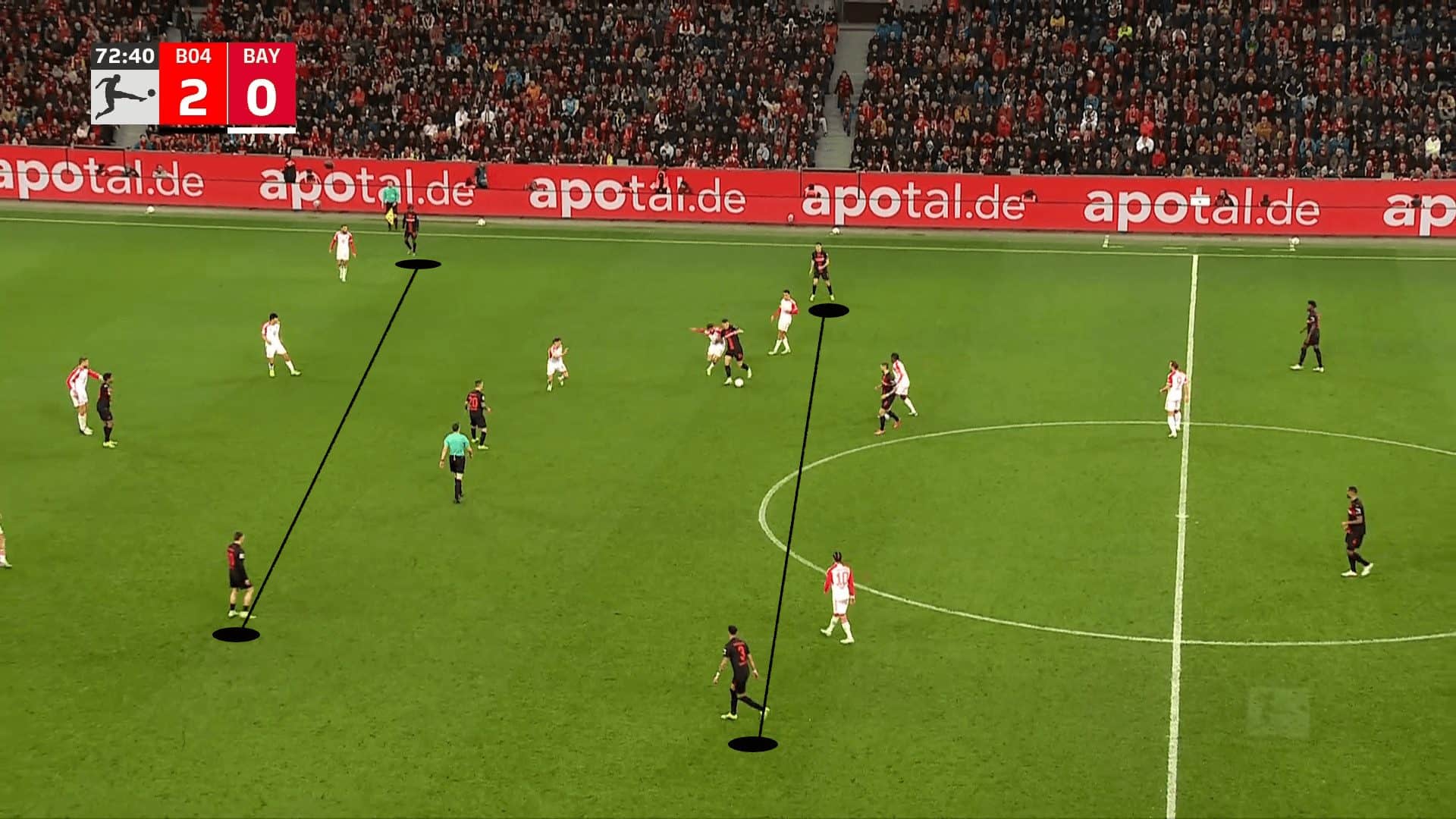
Now, this is a bit of an exception given that Leverkusen prioritised quick defensive transitions against Bayern Munich, but we’ve seen in previous examples how they have used a narrow attacking shape with seven or eight players tightly connected to the ball while the two wingers have the objective of stretching the backline.
In this example against Bayern Munich, they retained that narrow shape when Leverkusen did progress up the pitch.
This is where we see the team’s and the manager’s tactical intelligence.
It’s a highly adaptable group that is equally at ease with 73% of possession (which they did against Borussia Mönchengladbach) or 36%, as they managed against Bayern Munich.
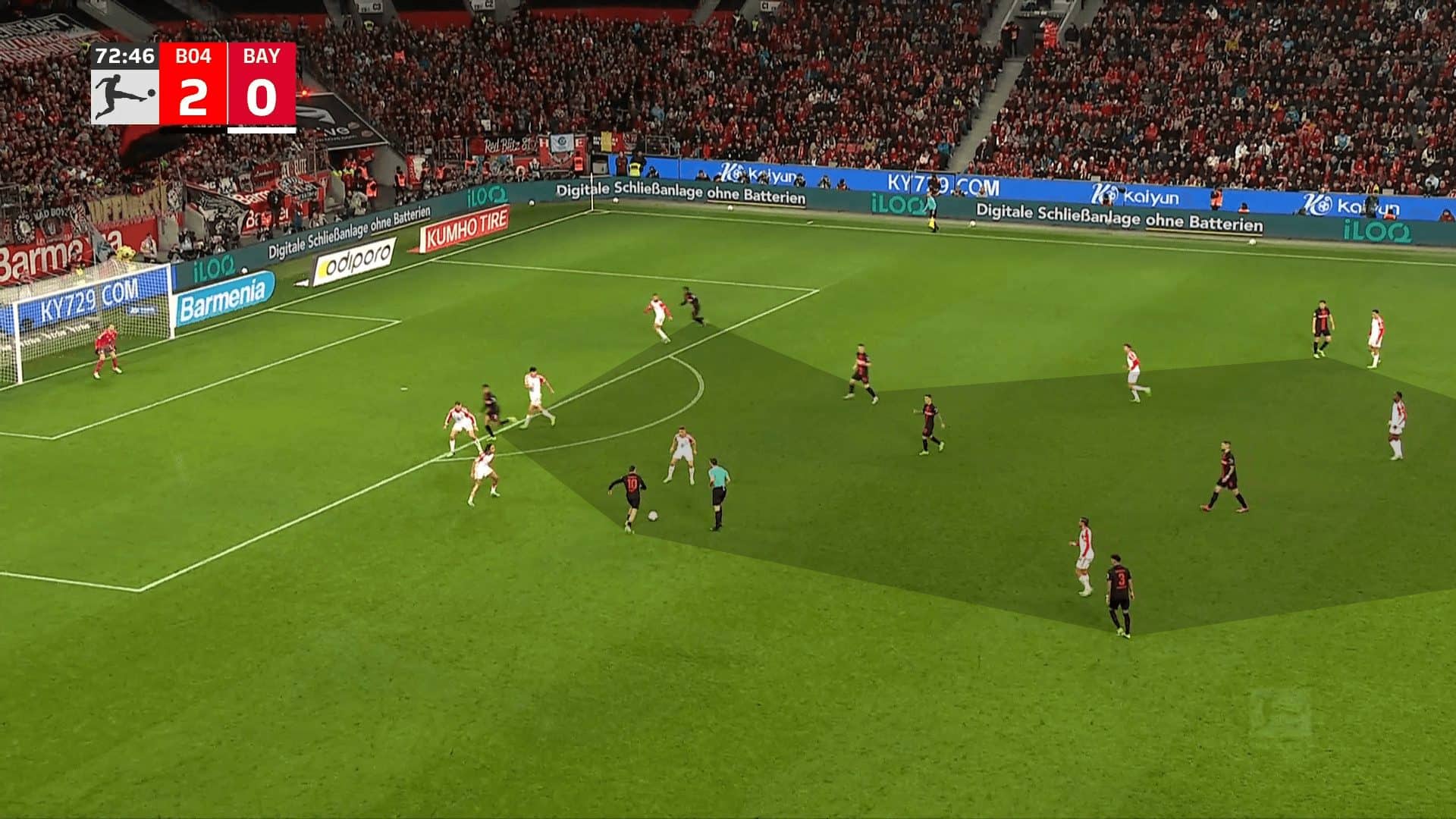
The principles of this free-flowing attacking side remain the same, but they can make small adaptations depending on the quality of the opposition and how they expect the match to play out.
Against Bayern Munich, there was typically a team-wide narrowness to the match tactics.
But this analysis has also shown that when they do enjoy more of the ball, including that match against Borussia Mönchengladbach, it’s just the two high and wide players offering width.
In contrast, the remaining field players are tightly connected to the ball, especially in more central areas, to give the wide playmakers the space they need to fully utilise their unique skill sets.
Conclusion
As the record-setting Bundesliga side nears a league title, which would end the 11-year reign of Bayern Munich, they are still undefeated at the time of writing and look like the favourites in each competition they are in.
A treble-winning season is well within reach.
The influence of Xabi Alonso tactics is arguably the managerial story of the year.
He took over a 17th-place club in October of 2022 and helped them to a sixth-place season — now, he has them at the top of the league and among the best in Europe.
This is a team with clear principles of play, a highly defined game model and the tactical intelligence to adapt their match tactics based on the opposition.
That’s a recipe for success, both domestically and continentally.
As the season comes to a close, Xabi Alonso’s Bayer Leverkusen will own a greater share of the spotlight, putting their free-flowing attacking football on display for the world to enjoy.

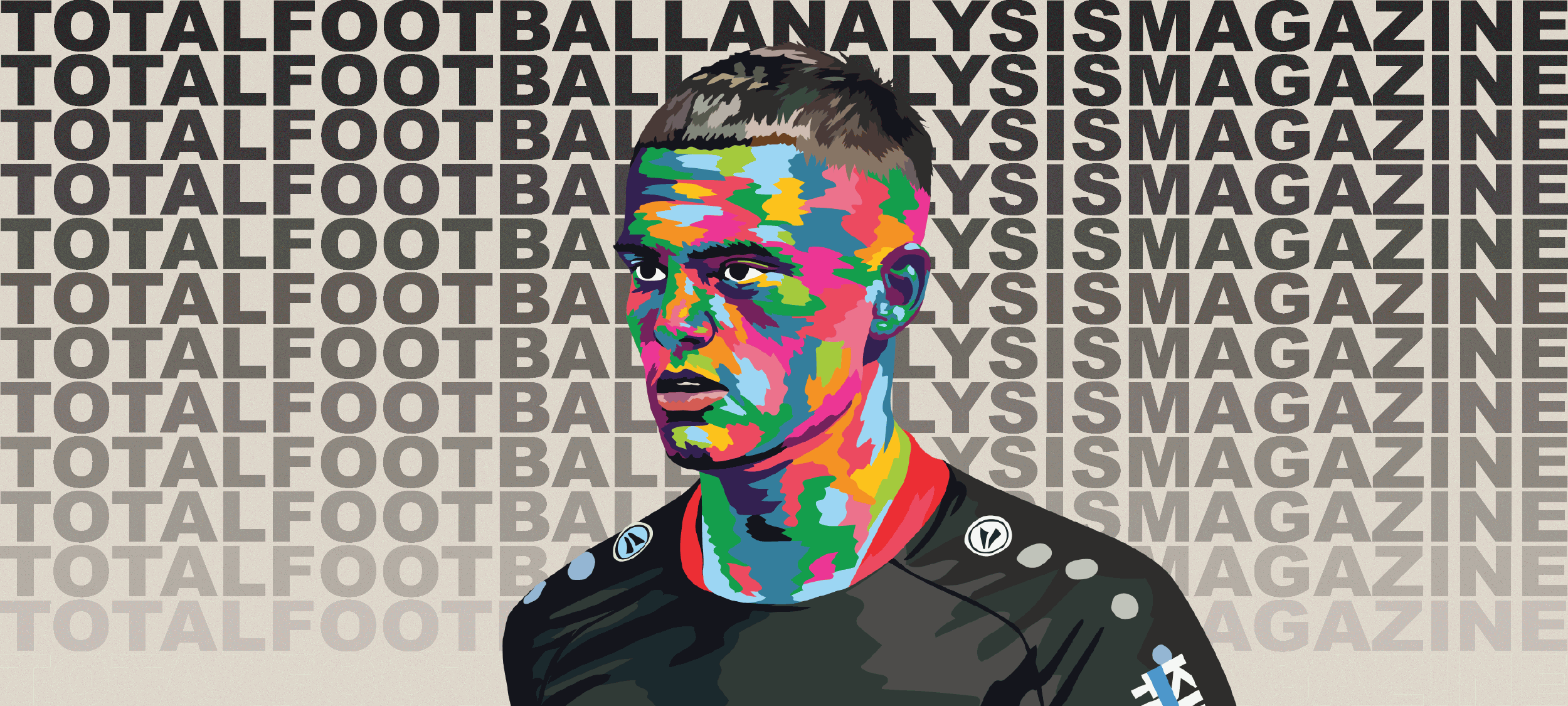



Comments